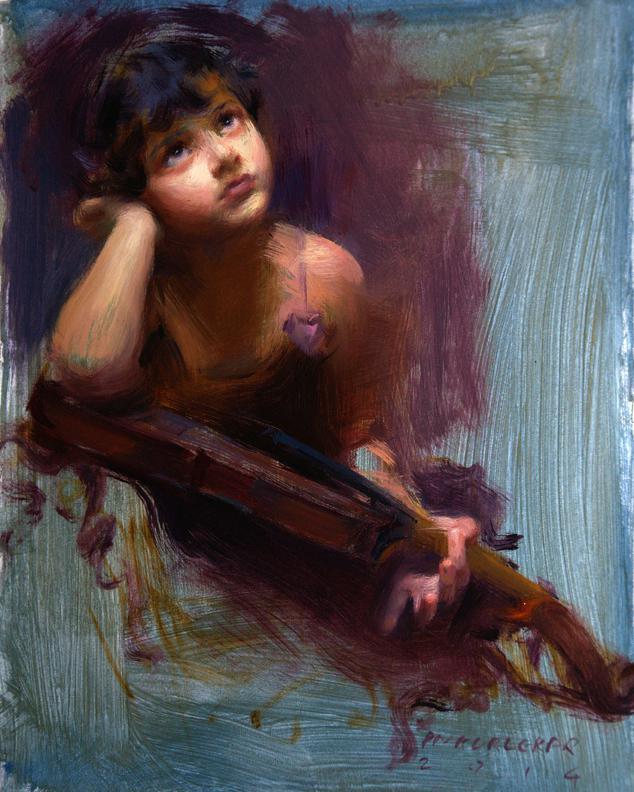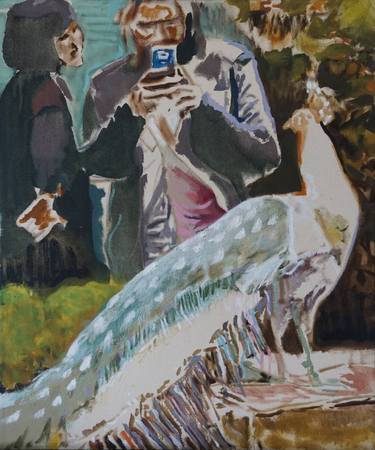Understanding Composition and Color in Figurative Oil Painting
Understanding Composition and Color in Figurative Oil Painting
Blog Article
The Advancement of Metaphorical Oil Paint: Recognizing Its Historical Value and Modern Interpretations
The evolution of metaphorical oil painting serves as an engaging lens through which to check out the interplay between artistic expression and historical context. Contemporary artists, attracting from this rich heritage, are now reinterpreting the human number in means that challenge conventional narratives.
Beginnings of Figurative Oil Painting
The origins of figurative oil painting can be mapped back to the very early Renaissance in Europe, specifically in the 15th century. The development of oil paint allowed for better depth of shade and information, improving the realism and vibrancy of their work.

In this transformative age, numbers were usually depicted within contextually rich settings, showcasing not just their physical characteristics yet also their mental states. Leaders such as Jan van Eyck and Titian harnessed the medium's convenience, using layering techniques to achieve luminance and structure. This advancement promoted the portrayal of elaborate materials and the subtleties of complexion, adding to the growth of portrait and narrative scenes.
In Addition, the Renaissance focus on humanism promoted a gratitude for individualism, which in turn influenced artists to produce more relatable and dynamic numbers - figurative oil painting. Therefore, metaphorical oil paint became an effective lorry for storytelling and emotional engagement, laying the foundation for future artistic movements and styles
Key Historical Activities
Substantial historic activities have formed the development of figurative oil paint, each contributing one-of-a-kind viewpoints and methods that expanded the tool's possibilities. The Renaissance marked a zero hour, emphasizing realistic look and the human kind, with musicians like Leonardo da Vinci and Michelangelo pushing the boundaries of physiological precision and perspective. Following this, the Baroque period brought significant contrasts of light and shadow, exhibited by Caravaggio, that instilled religious motifs with intense emotionality.
The 19th century presented Romanticism and Realism, where musicians such as Delacroix and Courbet tested classic perfects, concentrating on private expression and daily life. The development of Impressionism additionally transformed the medium by emphasizing the results of light and shade, bring about a separation from traditional representation.
In the very early 20th century, activities like Expressionism and Cubism redefined metaphorical paint via abstraction and the exploration of psychological depth. Each of these activities not just showed the societal adjustments of their times yet likewise prepared for modern analyses. The interplay in between these historical movements has created a rich tapestry of designs and ideologies, affecting contemporary musicians in their search of recording the human experience on canvas.
Strategies and Materials Development

Throughout the Baroque duration, methods such as chiaroscuro and sfumato emerged, enhancing the emotional resonance of figurative structures. Musicians began to trying out glazes and impasto, controling appearance and luminance. By the 19th century, advancements like using pre-mixed paints in tubes transformed ease of access, enabling musicians to paint en plein air and catch the fleeting effects of light.
The 20th century experienced the intro of artificial pigments and tools, which increased the combination and modified the consistency of oil paints. Furthermore, the exploration of new application methods, such as combination knives and brushes of differing rigidity, additional diversified creative expression. Jointly, these improvements mirror the evolving relationship in between materials, strategies, and the creative vision inherent in figurative oil paint.

Contemporary Analyses
Contemporary interpretations of metaphorical oil paint show a vibrant discussion in between tradition and advancement, where musicians challenge developed standards and explore diverse themes. This development shows up in different means, as modern artists mix classic techniques with modern ideas, often resolving social, political, and individual stories.
Numerous specialists attract inspiration from historical jobs, yet they instill their pieces with contemporary point of views, making use of the human type as a car for commentary on society, gender, and identity. Artists progressively explore abstraction, distortion, and multimedias, which enables a more comprehensive interpretation of the figure and its context.
In addition, using dazzling color schemes and unique structures typically serves to interfere with conventional viewing experiences, provoking important engagement from target markets. This shift in focus prolongs beyond appearances; it mirrors an expanding understanding of the complexities of human experience in an interconnected world.
As figurative oil painting proceeds to develop, it continues to be a vital tool for discovering the subtleties of modern life, embodying both a respect for heritage and a commitment to progressive thought. The result is an abundant tapestry of expression that reverberates with the intricacies of the contemporary human condition.
Influence on Modern Art
The impact of figurative oil painting on modern-day art is extensive, as it has actually consistently motivated a myriad of artistic activities and practices throughout the 21st and 20th centuries. From Expressionism to Surrealism and past, the exploration of the human figure has stayed a central style, permitting try these out artists to communicate complex feelings and stories. This emphasis on figurative representation has brought about a re-examination of visit this page typical strategies, leading to innovative methods that blend realism with abstraction.
Additionally, modern musicians have actually welcomed figurative oil painting as a way to address social and political issues, utilizing the medium to test perceptions of sex, identification, and culture. The resurgence of passion in figurative operate in recent years shows a yearning for connection in a significantly electronic world, where human experience and feeling are paramount.
Furthermore, the dialogue in between figurative oil painting and contemporary art appears in the works of musicians such as Kehinde Wiley and Jenny Saville, that make use of historic recommendations while infusing their pieces with modern significance. Inevitably, figurative oil painting remains to shape and redefine contemporary artistic expression, highlighting its long-lasting relevance in the art globe.
Verdict
The development of figurative oil painting emphasizes its historic value and versatility across different artistic activities. Ultimately, metaphorical oil paint remains an important tool for discovering the human experience, resonating exceptionally in today's electronic landscape.
The development of metaphorical oil painting serves as an engaging lens via which to take a look at the interplay between creative expression and historic context.Considerable historic motions have actually shaped the development of figurative oil painting, each adding distinct ideologies and methods that increased the medium's opportunities.As historical activities shaped the trajectory of figurative oil painting, the products and techniques used by artists have actually also undertaken significant makeovers. figurative oil painting.The impact of figurative oil painting on contemporary art is profound, as it has continuously inspired a myriad of imaginative activities and techniques throughout the 20th and 21st centuries.The advancement of metaphorical oil painting highlights its historical importance and adaptability across different imaginative motions
Report this page